Out of the hundreds of entries sent to Sky & Telescope, the following represent the best of the best. Click through to see the first-, second-, and third-place winners in each of our nine categories — as well as each of the Readers' Choice Award winners. And a special congratulations to our grand-prize winner Allan E. Morton for his breathtaking image entitled Majestic Orion.

When we announced the Beautiful Universe 2007 Edition photo contest, we hoped that the amateur astrophotography community would respond by sending in the absolute best pictures available. You certainly didn't disappoint. Out of the hundreds of entries sent to Sky & Telescope, the following nine pages represent the best of the best. Click through to see the first-, second-, and third-place winners in each of our nine categories — as well as each of the Readers' Choice Award winners.
A special thanks goes to our esteemed judges, our prize sponsors, and to all of you who participated. And don't forget to pick up a copy of this year's Beautiful Universe to see these pictures in all their glory. Inside you'll also find the best images that ground- and space-based telescopes have to offer. Check your local bookseller today.
Nightscapes: Constellations
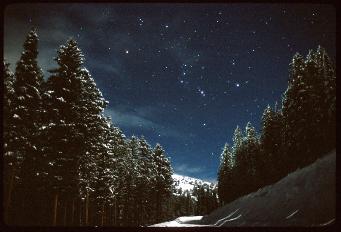
Although many constellations don’t look much like the creatures or objects they’re named after, it’s easy to see the human figure within Orion, the Hunter. Here, Orion greets the start of a cold winter night in Wyoming’s Teton Mountains. A first-quarter Moon illuminates the snow-trimmed trees along the ski-lodge road. Orion’s Sword, hanging below his belt, is pink with the glow of Messier 42.
Credit: Allan E. Morton
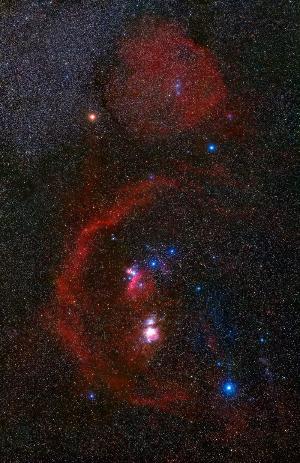
The Orion and Horsehead nebulas are perhaps the best-known features of the celestial Hunter, but they are just part of a larger cloud of gas and dust that takes up nearly the entire constellation. Wei-Hao Wang’s deep view of the region reveals more, including a red arc of glowing hydrogen, called Barnard’s Loop, that makes it appear as if Orion has a bow slung around his waist.
Credit: Wei-Hao Wang
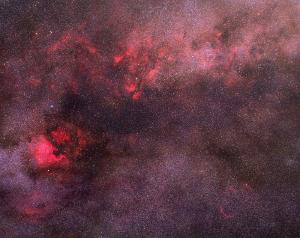
The stars of Cygnus, the Swan, have been sidelined in this deep view that emphasizes other treasures the constellation holds. Near the central star of the Northern Cross, the heart of Cygnus, we find a knot shaped like a butterfly.
Credit: Chan Yat Ping
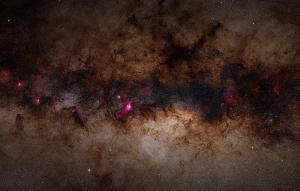
The constellation Sagittarius holds the center of our Milky Way Galaxy. It’s here that the star clouds are richest, but we also see a dark rift caused by interstellar dust. Regions of star formation dot the spine of the galaxy as pink knots in this wide-field vista.
Credit: Wei-Hao Wang
Nightscapes: Other Sky Phenomena
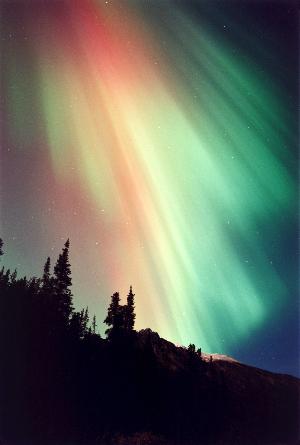
Credit: Michael Klensch
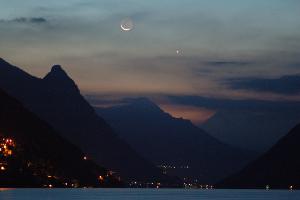
A summer’s dawn at Lake Lugano, along the border of Switzerland and Italy, brings the brightest denizens of the night sky together to meet the rising Sun. Joerg Staeheli’s portrait finds the dark side of the Moon gleaming with earthshine, as sunlight reflects off the Earth and doubles back from the lunar surface.
Credit: Joerg Staeheli
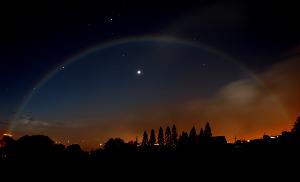
Groups touting Hawaiian tourism may promote how often you can see rainbows, but they probably don’t consider when they appear at night. On May 4, 2004, the full Moon rose to produce a moonbow for Rob Ratkowski in the town of Pukalani. It’s the same thing as a rainbow caused by the Sun, but fainter moonlight makes for a dimmer bow with subdued colors. The eye alone may only discern a ghostly arc, but a camera can capture the familiar spectral colors.
Credit: Rob Ratkowski
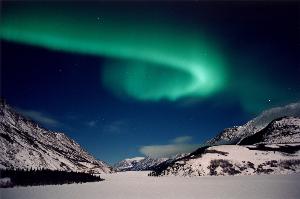
On another of Klensch’s outings, moonlight illuminates the snow-covered mountains of Canada’s Yukon Territory as an eddy of the northern lights whirls above.
Credit: Michael Klench
Solar System: The Moon
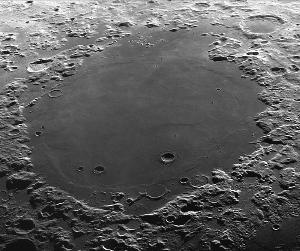
It’s morning in Mare Crisium, a vast plain in the Moon’s northeastern quadrant dotted by just a few craters. Crisium itself is a huge crater of sorts. Some 3 billion years ago an asteroid slammed into the Moon, gouging out the basin. Magma seeped up from the Moon’s still-molten core and filled the hole. The result, as we see looking toward lunar east, is a desolate plain with just a few hilly wrinkles.
Credit: Eric Roel
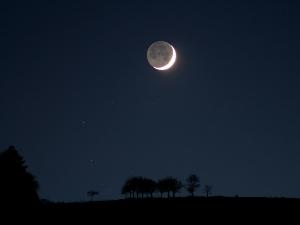
The two-day-old Moon sports bright earthshine as trees on a hilltop in the French countryside stand in silhouette against the glow of twilight.
Credit: Laurent Laveder
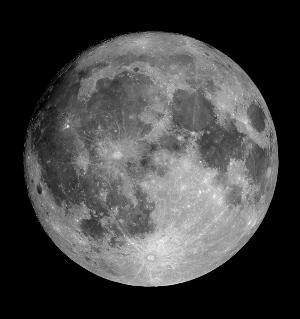
The fuller the Moon, the more washed out its surface features appear. Lunar shadows vanish in the noon Sun, and surface reflection is enhanced. Much of the details remain in this day-before-full scene because Roth Ritter employed a red-light filter that cut down the glare.
Credit: Roth Ritter
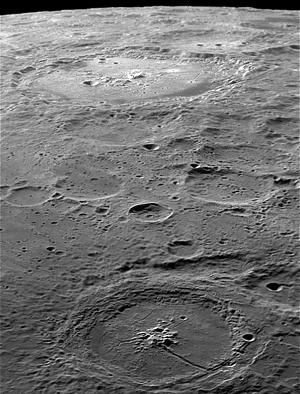
The craters Humboldt (top) and Petavius, each 155 miles across, lie near the southeastern limb of the Moon. Just as with Roel’s view of Mare Crisium, these features are best seen when the Moon is waxing crescent in the early evening sky.
Credit: Eric Roel
Solar System: The Sun

There are only a few astronomical events that make thousands of people travel thousands of miles and spend thousands of dollars for just the chance of seeing them. But anyone who’s witnessed a total eclipse of the Sun will surely tell you that it’s a magical experience. The main reason is because they see a view like this one in place of the Sun. Photographing totality is tricky. A single exposure cannot capture the gradations in brightness from the limb of the Moon to the wisps of outer corona. The 4 minutes of totality on March 29, 2006, allowed Peter Ward to make many different exposures, which he assembled into a single image that superbly represents the solar spectacle.
Credit: Peter Ward
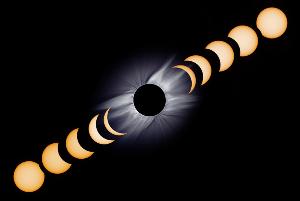
A few minutes of totality is the grand reward, but a full solar eclipse lasts more than 1½ hours, from the first bite the Moon takes out of the Sun, through totality, and until the Moon leaves the solar disk. Ward watched the entire show on March 29th and captured scenes from every act.
Credit: Peter Ward
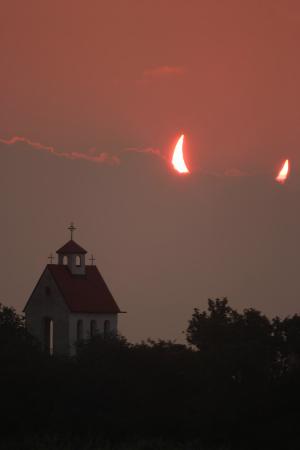
Horns of a partial Sun peek from behind horizon-hugging clouds and a church near Vienna, Austria, on May 31, 2003. The solar eclipse was well underway when Peter Wienerroither caught it at sunrise; in fact it was already half over at sunup. As the Sun climbed higher, the Moon slipped farther away.
Credit: Peter Wienerroither
Solar System: Planets

Planetary imaging by amateur astronomers has been revolutionized by the growing popularity of video techniques. Hundreds or thousands of split-second exposures are “stacked” to create a single image. The results can rival those of professional observatories. Here’s an exquisite example: a superb view of Saturn that captures rich color in the planet’s atmosphere, and of course its majestic rings.
Credit: Damian Peach
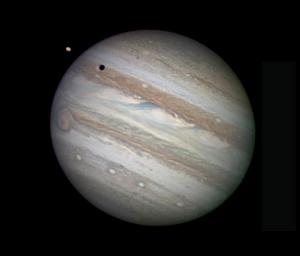
Peach teamed up with a friend David Tyler to produce a shot showing the swirls and banding in Jupiter’s atmosphere, including the Great Red Spot swinging into view. Even more remarkable, it reveals detail on the Jovian satellite Io, which also casts a shadow onto the planet’s cloudtops.
Credit: Damian Peach and David Tyler
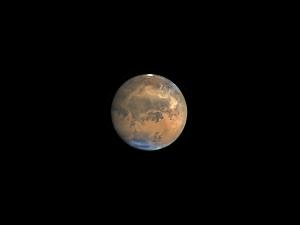
When Earth and Mars draw close, stacking video images can let observers track the Red Planet’s weather. In October 2005, Bill Flanagan followed the development of a dust storm on Mars, seen as the light orange patch on the left of the planet’s southern hemisphere.
Credit: Bill Flanagan
Other Solar-System Phenomena
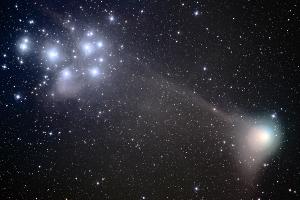
Brilliant comets are rare, unfortunately. But modest brightness can be forgiven when a comet strays near another celestial wonder, pro-viding a grand view juxtaposed by perspective. Jay Ballauer was ready on January 7, 2005, when Comet Machholz slipped past the Pleiades star cluster (Messier 45) in Taurus. The pairing seemed especially befitting as the ghostly tail of the comet washed over the nebulosity that’s spread like mist throughout the stars.
Credit: Jay R. Ballauer
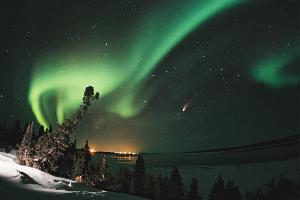
In spring of 1997, Michel Tournay and a friend were eager to cap-ture Comet Hale-Bopp from a picturesque locale near Chisasibi, Quebec. They didn’t expect to be treated to a display of northern lights, but they embraced their good fortune as the shimmering sheets of light helped accent the celestial visitor.
Credit: Michel Tournay
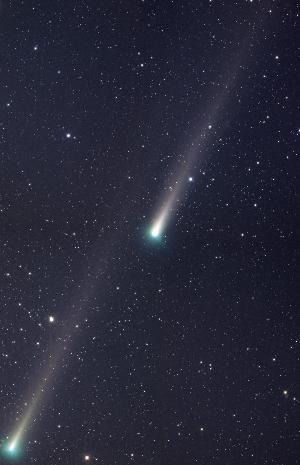
What’s better than one beautiful comet? Why, two of course! In early 2006 Comet Schwassmann-Wachmann 3 proved to be a mouth-ful to say and did its best to keep people talking about it. The frozen nucleus had broken apart sometime in the past. Here its two brightest fragments blaze as if they were racing each other through the solar system.
Credit: Gerald Rhemann and Michael Jager
The Deep Sky: Stars and Star Clusters
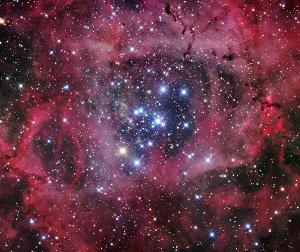
This region in Monoceros may be better known for the Rosette Nebula, but it’s the cluster of stars at the nebula’s core that carries the official catalog designation. These diamonds on black and red velvet are really the stars of the show, for their radiation is gradually eroding the nebula, as evidenced by the dark fingers of dust that point inward.
Credit: Robert Gendler
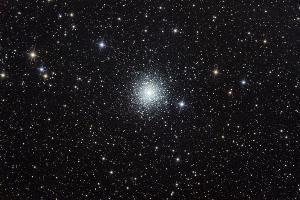
Globular star clusters, like Messier 80 in Scorpius, orbit outside the plane of most stars in our galaxy. These clusters contain upward of millions of ancient stars in a compact swarm, and invite your imagination to wonder what a night sky there must look like.
Credit: Daniel Verschatse
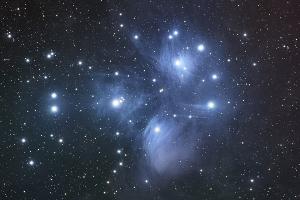
Even city-bound skygazers can easily view the familiar “Seven Sisters” of the Pleiades star cluster (Messier 45) in Taurus. A deep photograph, however, reveals cottony wisps that seem to surround these stars. Yet the nebulosity isn’t related to the cluster; it’s merely a chance encounter between them that presents us with a striking celestial deception.
Credit: Steven Mazlin
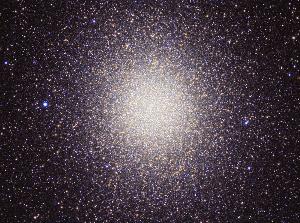
So big and bright that it can easily be seen with the unaided eye as a fat “star,” the globular cluster Omega Centauri is a treat to glimpse at any magnification. Your view fills with stars no matter if you’re looking with a high-power telescope or mere binoculars. Michael Sidonio managed to squeeze it into his camera’s field of view.
Credit: Michael Sidonio
The Deep Sky: Galaxies
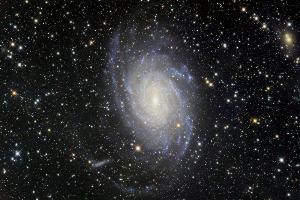
Daniel Verschatse’s stunning portrait captures a spiral galaxy 30 million light-years away in the constellation Pavo set against a rich field of stars in our own Milky Way. Young, hot stars coat the spiral arms with a shade of blue, while the yellow hue of stellar maturity predominates the central region where the core forms a barlike struc-ture. Astronomers believe that our galaxy has a similar form, so as we gaze at NGC 6744, consider that it’s like looking at ourselves.
Credit: Daniel Verschatse
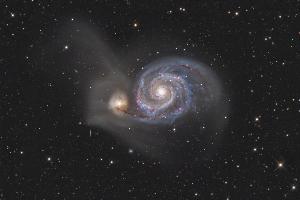
When galaxies venture too close to one another, the aftermath can be dramatic. Messier 51 in the constellation Canes Venatici bears the scars of gravitational battle as two star systems intertwine. The larger spiral has kept itself together for now, but this deep image reveals material cast off by tidal forces. Russell Croman of Austin, Texas, uses his remotely controlled telescope in New Mexico to capture cosmic scenes.
Credit: Russell Croman
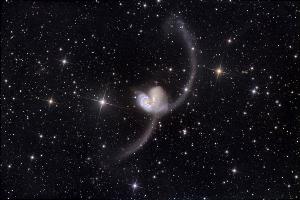
Verschatse strikes again with a view of two galaxies further along in their galactic dance than M51 is. Astronomers have dubbed the merged pair the Antennae because of the long tails of disrupted stars flung away by the gravitational embrace.
Credit: Daniel Verschatse
The Deep Sky: Nebulas
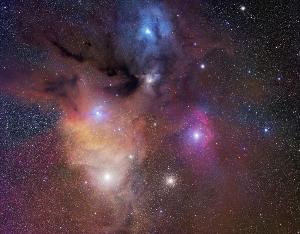
A grab-bag of celestial denizens can be found in the region around the bright star Antares (at lower left) in the constellation Scorpius. To the star’s right lies the globular star cluster Messier 4. The scene also offers three types of nebulas: a reflection nebula glows a somber blue at the top, surrounding the star Rho Ophiuchi; an emission nebula shines warm pink around Sigma Scorpii at right; and murky dark nebulosity wafts at upper left.
Credit: Robert Gendler, Jim Misti, and Steven Mazlin
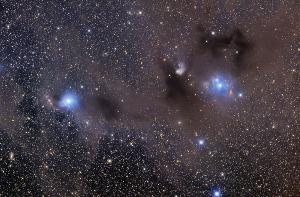
Dark tufts of nebulosity in the far-southern constellation Chamaeleon hang like clouds in front of the background stars, providing a sense of the third dimension. The light from a few embedded stars manages to escape, but not before it is scattered by the cosmic dust to produce the characteristic blue cast of a reflection nebula.
Credit: Gerald Rhemann and Michael Jager
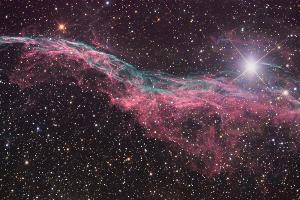
Enhanced to highlight glowing hydrogen gas, the leading front of a supernova remnant in Cygnus has been turned turquoise to underscore where the expanding material plows through space. The bright beacon is the 4th-magnitude star 52 Cygni, visible with the unaided eye.
Credit: Russell Croman
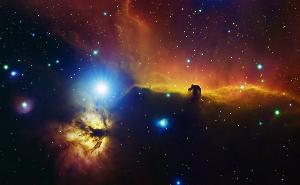
On the opposite side of the visibility scale, the Horsehead Nebula is one of the most difficult objects to observe, even in a telescope. The glow of the Orion Nebula is often called the Sword of Orion; would that would make the illumination behind the equine-mimicking dark cloud Orion’s Sidearm?
Credit: Filipe Alves
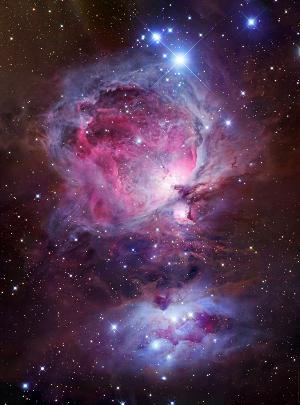
Orion is the place to be when it comes to reader’s choice nebulas! Top vote counts resulted in a tie for a pair of perpetual favorites that typify dramatic and enigmatic celestial sights. Among the brightest nonstellar deep-sky objects is the Orion Nebula. This view shows a wide field that includes more than just Messier 42, seen as the lower red-and-blue rosebud. The mostly blue cloud above merits its own designation: NGC 1977.
Credit: Robert Gendler
 0
0
Comments
You must be logged in to post a comment.